#marie de médici
Text




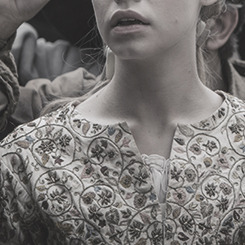

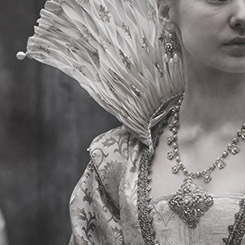


(ALMOST ALL) THE LADIES OF SEASON 1 - THE MUSKETEERS
A continuation of this. You can find the folder with all the icons here.
Source: my own screencaps + HD images from Far Far Away Site
#fridge art (fanart)#the musketeers#the musketeers bbc#bbc musketeers#alice clerbaux#adèle bessette#ninon de larroque#constance bonacieux#fleur baudin#milady de winter#ana de austria#christine of france#marie de médici#yes yes agnes and hélène and the mother superior and céline are missing. saved for round two#icons#rp icons
47 notes
·
View notes
Text
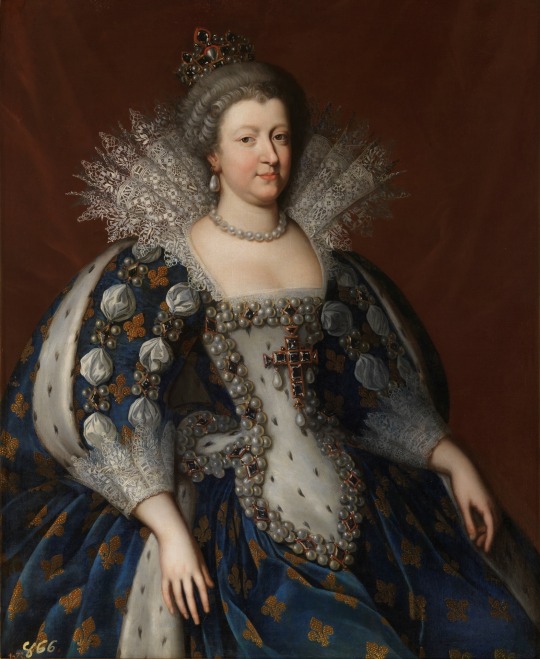
Marie de Médicis by Charles and Henri Beaubrun.
#royaume de france#marie de médici#marie de medici#marie de' Medici#reine de france#vive la reine#regent of france#coronation robes#maison de bourbon#italian aristocracy#casa de' medici#charles beaubrun#henri beaubrun#beaubrun
30 notes
·
View notes
Text

Marie de Médicis by Louis Boudan.
#louis boudan#marie de médicis#reine de france#vive la reine#royaume de france#maison de bourbon#casato di medici
5 notes
·
View notes
Text
".. and now that he loved him and was very worthily served, she wanted to have him ruined"- Louis XIII, Richelieu, and Marie de Medici.
The triangular relationship of monarch, mother, and minister, was rife with tension. While Marie's influence was not great enough to label the governing body a triumvirate, she was pushy enough to make decisions both in and out the council very, very difficult. She became jealous of her former protégé, listened to the backbiting criticism of dévots like Marillac and Cardinal Bérulle, and eventually spoke out in council against the cleric who had once dictated her speeches. She pushed and pushed until, in 1629 and 1630, she finally demanded that her son dismiss Richelieu. This placed Louis in precisely the position he sought to avoid: to choose between minister and mother.
Louis did his best to keep his mother content and contained. He made her regent for northern France during his absence at the siege of La Rochelle in 1627-1628, and again during his campaign in Savoy in 1629. When they were separated, he was a faithful correspondent on government and personal matters. From Susa, he wrote of being "right to the last breath of my life your very humble and obedient son." But, except when she insisted on Gaston's marrying in 1626, Louis refused to follow his mother's political recommendations when these differed from his own intuitions.
In the face of Marie's growing jealousy of the bond between her protégé and her son, Louis praised the Cardinal's services: "My Cousin the Cardinal of Richelieu has so worthily served me on this occasion that I cannot say just how much I am satisfied with his care and diligence. They give me hope that the rest of my undertaking will go the same way; and that God, if it pleases him, will continue to favor my designs."
In the winter of 1629-30, Louis mustered his strongest argument, saying that "when he had been not at all inclined toward [Richelieu] she got him to employ him; and now that he loved him and was very worthily served, she wanted to have him ruined." Marie countered in vain "that he could employ him if he wished, but for her part she would never engage his services." Louis insisted on getting the three principals together in a meeting that left all of them in tears. An observer recalled that "the king threw so much passion into this reconciliation that it was achieved the next day." Against her better judgment, Marie agreed to retain Richelieu and his relatives as leading members of her personal household. And so tensions continued.
Ultimately, Louis resolved such tensions as these by striking back. Irritated beyond measure by government problems involving human failures, he lashed out against the immediate wrongdoer and made sweeping cabinet changes that, not trusting his own judgment, he had previously hesitated to undertake.
A. Lloyd Moote - Louis XIII the Just
#xvii#a.lloyd moote#louis xiii the just#louis xiii#cardinal de richelieu#marie de médicis#jealousy#it's pretty amusing to see how the dramatics of marie and richelieu trigger louis xiii in doing what he didn't trust himself to do at first#in sheer annoyance and retaliation
15 notes
·
View notes
Text
Je regarde Marie-Antoinette (Canal+) et dieu qu'elle a l'air gaudiche dans le premier épisode ça me tue.
En vrai ce qui me tue vraiment c'est la manière dont toute son arrivée est mise en scène. C'est vraiment pauvre petite chose innocente face à ces viles français.
Et je ne dis pas que les français étaient sympathiques ou quoi, mais il y a un moment, j'ai juste envie de lever les yeux au ciel.
Je sais bien qu'elle n'était pas celle qui était destinée à épouser le dauphin. Mais n'y aurait il pas eu moyen de la former un peu mieux ? Parce que là, moi je comprends un peu l'ensemble de la Cour qui pense qu'elle est gourde.
Ah et quand elle se plaint pour le chien et qu'elle le dit à l'ambassadeur qui se dit qu'il va se plaindre par voie diplomatique... Non mais c'est même ses fringues qui auraient dû lui être enlevées aussi. L'épouse doit abandonner tous les biens de son pays d'origine pour entrer dans celui qui va devenir le sien. Tradition de l'Ancien Régime.
Et puis alors le coup de la bague, mais mon dieu...
Non vraiment, j'allais dans cette série plutôt motivée, mais là... Y'a au moins 20 raisons pour lesquelles on devrait avoir un incident diplomatique.
#marie antoinette canal+#je la trouve tellement bécasse#ah bah c'est sûr qu'à côté de Marie de Medicis c'est pas la même chose#En plus comme elle a l'air d'avoir beaucoup plus de 15 ans ça n'aide pas#marie antoinette 2022#marie antoinette canal plus#Catherine de Médicis pardon pas Marie
8 notes
·
View notes
Photo






Je reviens à mon projet de présenter la plupart de mes 53065 photos (nouveau compte !)
2011. Une journée d’automne à Paris.
Les jardins du Luxembourg, avec la Fontaine Marie de Médicis (”Polyphème surprenant Galatée dans les bras d’Acis), une rhubarbe (?) et le Sénat.
#souvenirs#paris#automne#jardins du luxembourg#luxembourg#bacchus#satyre#ménade#rhubarbe#sénat#fontaine#fontaine marie de médicis#cyclope#polyphème#galatée#acis
5 notes
·
View notes
Text
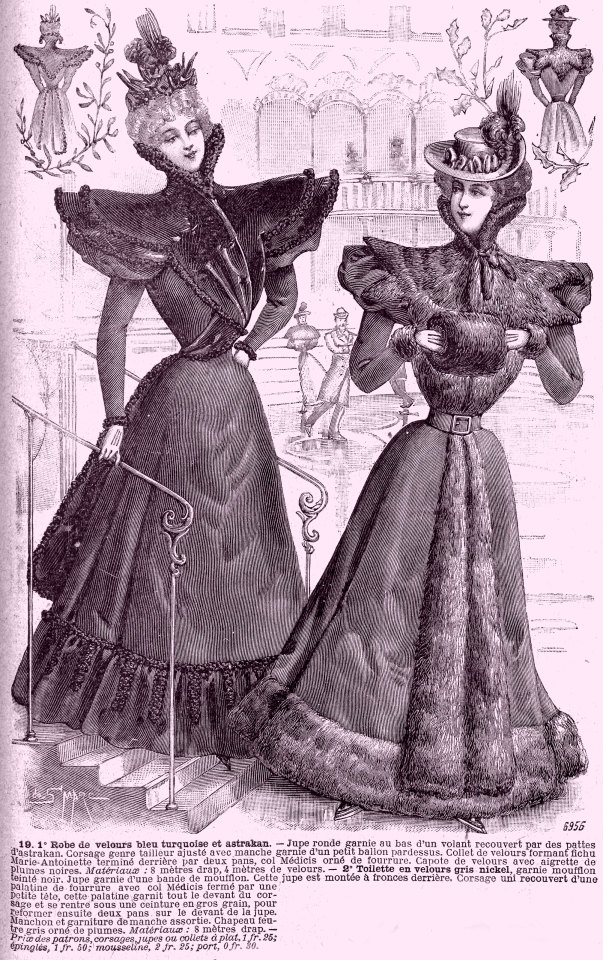
Le Petit écho de la mode, no. 47, vol. 18, 22 novembre 1896, Paris. 19. 1. Robe de velours bleu turquoise et astrakan. 2. Toilette en velours gris nickel. Ville de Paris / Bibliothèque Forney
No. 1. Robe de velours bleu turquoise et astrakan. — Jupe ronde garnie au bas d’un volant recouvert par des pattes d’astrakan. Corsage genre tailleur ajusté avec manche garnie d’un petit ballon pardessus. Collet de velours formant fichu Marie-Antoinette terminé derrière par deux pans, col Médicis orné de fourrure. Capote de velours avec aigrette de plumes noires.
No. 1. Turquoise blue and astrakhan velvet dress. — Round skirt trimmed at the bottom with a ruffle covered by astrakhan legs. Fitted suit-style bodice with sleeve trimmed with a small balloon overcoat. Velvet collar forming a Marie-Antoinette scarf finished behind with two panels, Medici collar decorated with fur. Velvet hood with black feather egret.
Matériaux: 8 mètres drap, 4 mètres de velours.
—
No. 2. Toilette en velours gris nickel, garnie moufflon teinté noir. Jupe garnie d’une bande de moufflon. Cette jupe est montée à fronces derrière. Corsage uni recouvert d’une palatine de fourrure avec col Médicis fermé par une petite tête, cette palatine garnit tout le devant du corsage et se rentre sous une ceinture en gros grain, pour reformer ensuite deux pans sur le devant de la jupe. Manchon et garniture de manche assortie. Chapeau feutre gris orné de plumes.
No. 2. Ensemble in nickel gray velvet, lined with black tinted mouflon. Skirt trimmed with a strip of moufflon. This skirt is gathered at the back. Plain bodice covered with a fur collar with Medici collar closed by a small head, this collar adorns the entire front of the bodice and is tucked under a grosgrain belt, to then reform two panels on the front of the skirt. Sleeve and matching sleeve trim. Gray felt hat decorated with feathers.
Matériaux: 8 mètres drap.
#Le Petit écho de la mode#19th century#1890s#1896#on this day#November 22#periodical#fashion#fashion plate#description#Forney#dress#collar#gigot#devant et dos
21 notes
·
View notes
Text

"Marie de Médicis" par Frans Pourbus le Jeune (1606-07) présentée par Francesco Solinas - Collège de France - lors des journées consacrées à "L'Ornement Précieux II" par L'Ecole des Arts Joailliers au Collège de France, janvier 2024.
#conferences#peinture#style#dentelle#inspirations bijoux#bijoux de tête#perle#Medicis#Pourbus#Solinas#EcoleVanCleef&Arpels#CollegeDeFrance
9 notes
·
View notes
Text
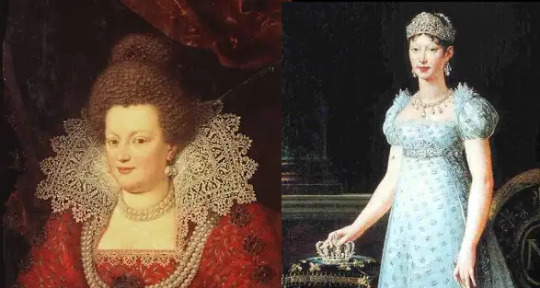
Marie de Medicis:
Mother of Louis XIII and widow of Henri IV, she ensured part of the regency, alongside Richelieu. She helped the devlopment of the arts and basically created the french culture of arts all by herself. Also she named her second son Gaston.
Marie-Louise d'Autriche:
Great-niece of Marie-Antoinette through the austrian side, she marries Napoléon Ier in 1810. She gives birth to Napoléon II (l'aiglon) and later becomes queen of Parme and other territories under her own name (not Napoléon's, since he's been defeated in the mean time). She's a habsburg.
6 notes
·
View notes
Text

Rholala, quelle merveille.
Je n’aurais pas cru me passionner pour une histoire de mariage à la cour des Médicis au XVIe siècle, mais la magie de Maggie O’Farrell a encore frappé. Comme pour Hamnet, elle s’est emparé d’un personnage un peu oublié de l’histoire, ici Lucrèce de Médicis, et s’est intéressée à elle, aux silences de l’histoire. Elle est allée dans le sens des rumeurs qui entourent sa mort, un an après ses noces, et a vraiment réussi à faire revivre une époque, des mœurs, des lieux très éloignés de nous, le tout dans une prose éblouissante. Le texte est vraiment très beau, presque précieux, érudit, orné, tout autant que son héroïne est nue, seule, comme une bête sauvage en cage (une tigresse par exemple ?), qui doit pourtant s’efforcer de complaire à tous, et notamment à son ombrageux mari, le duc de Ferrare.
Imaginez, mariée à quinze ans, morte à seize. Ayant vécu certes parmi les privilégiés de son temps, mais entièrement soumise à sa fonction : étendre le pouvoir de ses parents, puis celui de son mari.
C’est drôle, parce qu’au fond, j’ai un peu eu l’impression de lire du Lola Lafon : la fillette, dont on scrute les menstrues avant de lui faire épouser le duc (puisque sa promise -la sœur de Lucrèce ! -est morte de tuberculose), la femme qui doit se taire, obéir à son époux même lorsqu’il se montre effrayant, l’utérus sur pattes qu’elle devient avec son mariage, sommée de donner naissance à un héritier, vite !
Le corps comprimé dans des habits, ou dans les rideaux du lit à baldaquin, sous le corps musculeux de son mari enfiévré, ou entre les murs d’un palais glacial, ou encore empêché, figé, pour permettre une peinture luxueuse, le fameux portrait qui donne le titre au livre.
Malgré toutes ces entraves, ces noeuds serrés autour d’elle, elle réussit, dans la souffrance mais avec un panache intérieur, à s’échapper artistiquement, à saisir la beauté, à comprendre les cœurs, à laisser le sien invincible. Sa force -que lui donne la fiction de l’autrice - est très émouvante. Son histoire devient un conte féministe anachronique, nié par les faits, mais auquel on croit, dur comme fer, même si ce n’est que littérature…
C’est aussi à ça que servent les histoires, réécrire, transformer la laideur en beauté… ce récit est son tombeau, aussi impressionnant que digne et lumineux.
#littérature#livres#litterature#roman#livre#le portrait de mariage#maggie o'farrell#éditions belfond#Lucrèce de Médicis
5 notes
·
View notes
Note
Chegando com pedido inusitado, mas acho que vcs conseguem me ajudar. Quero fazer um perso da nobreza, mas queria me basear em gente que já existiu, figuras históricas, mas não sei quais são legais, de verdade, podem me ajudar? Dando apenas o nome posso buscar no google, mas é que sou péssima em história e nunca sei quem é legal
O quanto eu amei essa ask não está escrito!! Pompurin, você veio ao lugar certo, porque eu sou o maior dump de história de realeza (ao menos, que eu conheço). Ser legal já tira todo mundo da lista, porque ninguém foi legal, eles podiam ter ações nobres e sociais, mas era por algum interesse mascarado... Nobreza nunca foi simpática, mas as histórias são magnificas. Vou separar alguns nomes para ti. [ meio edit, acho que vai ficar muito extenso, então depois da Rainha Elizabeth II, não coloquei descrições, apenas em alguns específicos. ]
Lady Di, nossa amada Princesa Diana da Inglaterra (1961-1997). Minha amada mais injustiçada, sou a maior apaixonada por tudo que a envolve (já assisti todos os documentários) e ela é um exemplo perfeito de monarca que foi contra as regras da Coroa Britânica.
Kate Middleton (1982). Atual princesa de Gales e esposa do Príncipe William da Inglaterra, além de se mostrar uma mãe exemplar (com semelhanças com sua sogra), também é um exemplo de monarca, porque ela é muito simpática com as pessoas.
Maria Leopoldina da Áustria (1797-1826). Esposa de Dom Pedro I de Portugal-Brasil. Muito importante em muitos momentos do Brasil Império.
Teresa Cristina de Bourbon-Duas Sicília (1822-1889). Imperatriz do Brasil e esposa de Dom Pedro II. Teve uma novela da Globo que mostrou muito dela, uma mãe amorosa e que cuidava de seu império, mas que teve momentos conturbados com o marido lixo.
Pedro II do Brasil (1825-1891). Último imperador do Brasil. Tenho muitos sentimentos controversos sobre o Pedro, todos envolvendo sua gestão e a mulher dele, mas a história dele vai muito além do que aprendemos na escola.
Cleópatra VII Filopator (69 a.C - 30 a.C). Falar da Cleópatra é muito !!!, ela foi uma das poucas mulheres que governaram o Egito (se não a única) e tem muita história, claro que existem as problemáticas, mas ela sempre foi estrategista e sedutora. Até hoje, seu sarcófago não foi localizado, o que indica que tem muito que não sabemos sobre.
Rainha Elizabeth II (1926-2022). Famosa "Betinha" para os brasileiros, tem muito sobre ela que dá raiva, mas ela teve muitos momentos bons na vida e claro, viveu bastante.
Rainha Vitória (1819-1901). Subiu ao trono com apenas 18 anos e tem a chamada Era Vitoriana.
Ana Bolena (1501-1533). Bela e decapitada por mando do marido, responsável pelo corte da relação Igreja X Inglaterra. Aconselho procurar o musical The Six, porque mostra todas as seis esposas do Henrique e como elas são interessantes.
Ricardo I (1157-1199). Ricardo Coração de Leão, tem uma história legal.
Henrique VIII (1491-1547). Um homem que não presta, teve várias esposas e muitas coisas rolaram no mandato dele. Aconselho ver The Tudors.
Catarina de Médici (1519-1589)
Maria Antonieta (1755-1793). Essa mulher... Vivia de luxúria e a frase dos brioches vem dela.
Luís XIV (1638-1715). Rei Sol.
Nefertiti (1370 a. C.-1330 a. C. - estimada). Descrita como a mais bela do mundo.
Mary Stuart (1542-1587)
Catarina II da Rússia (1729-1726). Nunca deixarei a Catarina, a Grande de fora. Outra rainha que admiro demais, apesar dos erros cometidos, ela foi muito sagaz e inteligente em dar um golpe no próprio marido e assumir o trono de Todas as Rússias, mesmo enfrentando grandes problemas. Existem muitos conteúdos sobre ela, mas se quiser rir, aconselho ver a série The Great.
Pedro III da Rússia (1728-1762). Teve um mandato curto porque foi deposto (sofreu O golpe da Catarina), vivia embriagado... Como ele é mostrado em The Great é um pouco demais, talvez, mas tá ali.
Rei George III do Reino Unido (1738-1820). Aquele rei lá de Queen Charlotte, ele tinha uma doença chamada porfiria, mas na época... Bem, só o chamaram de louco mesmo (aquela época era terrível).
Sophie Charlotte de Mecklemburgo-Strelitz (1744-1818). Assim como muitas figuras históricas, ela foi embranquecida, mas Charlotte era filha de portugueses e africanos, mas nasceu na Alemanha e talvez esse seja o motivo... Mas ela foi uma ótima rainha.
São alguns nomes, aqueles que lembrei para pesquisar, mas se pesquisar sobre os monarcas da Europa, com toda a certeza, vai encontrar uma infinidade! Podia falar outros, mas a Joy disse que ia ficar muita informação e ela está certa, acho que se pesquisar por esses já vai encontrar novos nomes que podem ajudar.

7 notes
·
View notes
Text









Le Capitan.
1960.
Réalisation : André Hunebelle
Scénario :Jean Halain, André Hunebelle et Pierre Foucaud
Casting :
Jean Marais, Bourvil, Elsa Martinelli, Pierrette Bruno, Arnoldo Foà, Jacqueline Porel, Christian Fourcade, Annie Anderson, Guy Delorme
Synopsis :
Louis XIII vient de passer l'âge de la majorité, mais sa mère Marie de Médicis continue de gouverner le royaume avec son favori Concini, premier ministre, qui conspire pour éliminer le souverain et sème la terreur dans le pays. Une conjuration de grands seigneurs vise à chasser Concini et à remplacer le roi défaillant par le duc Charles d'Angoulême. Le chevalier François de Capestang, qui a été sauvé dans un combat par Gisèle d'Angoulême, est décidé à se battre pour faire triompher la justice et sauver la couronne de son roi, ainsi que la vie de Gisèle. Il part pour Paris présenter les remontrances de la noblesse de sa province.
Plaisir de lecture :
Un de mes films de cape et d’épée préférés ! Il y a tout ce qu’il faut là où il faut : action, complot, aventure, duel et évasion, romance bien dosée, humour !
Pour une fois, Louis XIII ne passe pas pour un idiot incapable.
Note : 5 chats.
Disponibilité :
Existe en DVD et Bluray.
Disponible en VOD.
Bonus Points Chats :
Pas de chats ! Mais le chien et le cheval de Cogolin font leur show.
Note : 3 chats.
3 notes
·
View notes
Text
Thoughts on episodes 5 and 6 S1:
Episode 5:
Sadly, i forgot to check if Aramis took his old sword back from Marsac's grave. I'll remember to do so next time
I miss the lackeys but the scenario is still awesome so there's that
I don't really see what Porthos's love interest brings to the table honestly =( You could've had the same story without her and it might have been even more impactful actually -but I'm not a fan of love triangles in general unless they end in a happy polycule so take this with a pinch of salt
I actually think she should've been the villain it would've made her more interesting
Didn't think we'd have a social commentary on social gentrification in episode 5 but I'm super glad we did
Didn't think we'd have a social commentary on tolerance in episode 5 but I'm super glad we did
Still think Richelieu and de Tréville absolutely kill it when they're on screen together
Porthos being saved by his lover Aramis is awesome
Is every member of the team gonna need to be found innocent of a crime they were framed for at some point ? Because if so I'm in
In the book though it would've probably gone a whole different way, namely: "Did you kill that man Porthos" "I dunno but if I did he probably deserved it"
Love that d'Artagnan is progressively transitioning to wearing full leather and coming out of his shell
Episode 6:
Best thing in the whole episode is Richelieu protecting his King son
De Tréville and Richelieu share custody of Louis
I still rather like Louis, I'm glad he's not being shown as a total dumbass xD it's refreshing to see him portrayed as a more complex character !!!
Loved Marie de Médicis's design. Very extra
That being said, fuck Marie de Médicis
Constance SLAY
Aramis has trust issues with his polycule. Come on dude you should know they're ride or die you don't need to run off into the sunset every time you want to defy orders
I'm glad we get to see more Richelieu murdering all the remaining side characters at the end of each episode >=)
I'll never get over Richelieu's design ALSO being full leather. It's perfect
#dgix watches the musketeers#bbc the musketeers#the musketeers#porthos#athos#aramis#d'artagnan#richelieu#constance bonacieux#louis xiii
11 notes
·
View notes
Text
Aftermath of a coup: dealing with Marie's and Concini's creatures
Louis XIII dealt with Marie's and Concini's ministerial creatures exactly the way he wanted: according to his scale of political crimes and punishments. Mangot was the most innocuous of the triumvirs; hence, he was merely ordered peremptorily by the king's messenger to hand over the seals of his office, and was not allowed to see his monarch. In sharp contrast, Barbin was immediately jailed and his financial records seized. Ostensibly this action was to facilitate the trial against the Ancres, but it clearly reflected the king's belief that he was guilty of criminal negligence. Marie tried to intercede with Louis, first through Luçon, then at her own leave-taking with her son, and finally by letter from Blois. Barbin was kept in prison for sixteen months, then banished forever from France. Neither his own later appeals to Louis, nor those of Déageant and Luçon, succeeded in restoring his reputation and confiscated assets.
Luçon's fate was more complicated than that of the other triumvirs, reflecting a contest of wills between a hostile Louis XIII and a temporizing Luynes. From the king's perspective, the future cardinalminister Richelieu had three strikes against him: his closeness to Barbin, his indebtedness to Concini for his office, and his terrifyingly bright, authoritarian manner. The monarch revealed all his adolescent distrust on seeing the bishop of Luçon try to join the other secretaries of state after Concini's fall: "So! Luçon! I've finally escaped your tyranny."
Luynes immediately objected that Luçon was not all bad, pointing out the bishop's offer of loyalty before the coup. The king's favorite seems also to have suggested that the cleric's diplomatic skills and influence with the queen mother could help to keep her under control. Louis was sufficiently impressed to let Luçon act as Marie's temporary bargaining agent while she was incarcerated in the Louvre, and to let him accompany her to Blois. The bishop, however, departed soon after for his diocesan residence, probably in anticipation of royal disfavor. Explicit royal orders then sent him further away to the papal territory of Avignon.
These successive exiles undoubtedly reflected Luynes's second thoughts that Luçon was too dangerous a rival to leave with Marie. But they also bear the mark of a suspicious young Louis XIII, terrified of double manipulation by an imperious priest and an irrepressible mother. For his part, Luçon put the best face on his fall from secular grace in his memoirs, doctoring the sequence of events to suggest that the king bore him only good will.
A. Lloyd Moote - Louis XIII the Just
#xvii#a.lloyd moote#louis xiii the just#louis xiii#claude mangot#claude barbin#still stuck with everybody's shit the poor man#cardinal de richelieu#marie de médicis#charles d'albert de luynes#richelieu: i am fine extremely fine i have never been more comfortable in my life ever#louis: oh god you're the worst actually i should kick you out of france#luynes: can everyone maybe calm down ?#richelieu: i am the picture of calm and relaxation
10 notes
·
View notes
Photo

EXPOSITION | Sous les jupons des reines ➽ https://bit.ly/Exposition-Jupons-Reines Interdite aux moins de 16 ans, la visite « Sous les jupons des reines » explore l’intimité et les mœurs des 10 reines ayant séjourné à Blois, d’Anne de Bretagne à Claude de France en passant par Marie Stuart, Catherine ou Marie de Médicis
3 notes
·
View notes
Photo






Je reviens à mon projet de présenter la plupart de mes 54110 photos (nouveau compte )
2014. Arras, le Musée des Beaux-Arts. Une expo sur Versailles.
- buste d'Elagabale - Italie XVIe s. + France XVIIe s.
- “Marie-Thérèse, épouse de Louis XIV"- France XVIIe s.
- id
- “Vénus Médicis” - France XVIIe s
- évocation des grilles du château
- “Visite du Roi aux Gobelins" - France XVIIIe s.
#souvenirs#arras#musée des beaux-arts#versailles#louis XIV#marie-thérèse#éliagabal#vénus au bain#medicis#grilles#gobelins#tapisserie
6 notes
·
View notes